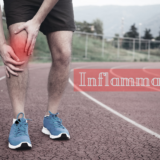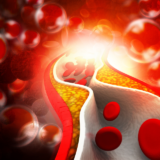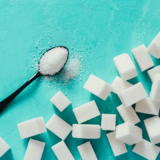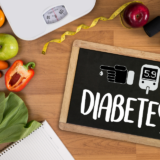What is Cholesterol?







What is cholesterol?
Cholesterol, a very common word that is heard from every mouth almost, is a fatty substance (lipid) that is made by all your cells. It’s produced naturally in your body, and we can also get cholesterol from some foods. Cholesterol is a fat found in your blood and it is vital to human life. You need a certain amount of cholesterol to have energy, keep your cells healthy, keep growing and protect your organs. Without cholesterol we could not live, this is to say it is vital for many functions in our body, but too much is bad. While it is needed for good health, too much cholesterol can damage your arteries and increase your risk of heart disease. Cholesterol is mainly used to build cell walls and produce some hormones.
Also, Cholesterol can be explained as a chemical compound that the body requires as a building block for cell membranes and for hormones like estrogen and testosterone. The liver produces about 80% of the body’s cholesterol and the rest comes from dietary sources like meat, poultry, eggs, fish, and dairy products. Foods derived from plants contain no cholesterol.
Cholesterol content in the bloodstream is regulated by the liver. After a meal, cholesterol in the diet is absorbed from the small intestine and metabolized and stored in the liver.
When too much cholesterol is present in the body, it can build up in deposits called plaque along the inside walls of arteries, causing them to narrow.
Cholesterol does not travel freely through the bloodstream. Instead, it is attached or carried by lipoproteins (lipo = fat) in the blood. There are three types of lipoproteins that are categorized based upon how much protein there is in relation to the amount of cholesterol.
Low-density lipoproteins (LDL) contain a higher ratio of cholesterol to protein and are thought of as the “bad” cholesterol. But we should be aware that only elevated levels of LDL lipoprotein increase the risk of heart disease, stroke, and peripheral artery disease, by helping form cholesterol plaque along the inside of artery walls.
Over time, as plaque buildup (plaque deposits) increases, the artery narrows (atherosclerosis) and blood flow decreases. If the plaque ruptures, it can cause a blood clot to form that prevents any blood flow. This clot is the cause of a heart attack or myocardial infarction if the clot occurs in one of the coronary arteries in the heart.
High-density lipoproteins (HDL) are made up of a higher level of protein and a lower level of cholesterol. These tend to be thought of as “good” cholesterol. The higher the HDL to LDL ratio, the better it is for the individual because such ratios can potentially be protective against heart disease, stroke, and peripheral artery disease.
Very low-density lipoproteins (VLDL) contain even less protein than LDL. VLDL like LDL has been associated with plaque deposits.
Triglycerides (a type of fat) may increase cholesterol – containing plaques if levels of LDL are high and HDL are low.
Total cholesterol score is the sum of HDL cholesterol, LDL cholesterol and 20% of triglycerides as determined by a blood test. A high score indicates an increased risk for developing cardiovascular disease and/or strokes.
| Total Cholesterol Level | Category |
| Less than 200mg/dL | Desirable |
| 200 – 239 mg/dL | Borderline high |
| 240 mg/dL and above | High |
| LDL Cholesterol Level | LDL Cholesterol Category |
| Less than 100 mg/dL | Optimal |
| 100 – 129 mg/dL | Near optimal/above optimal |
| 130 – 159 mg/dL | Borderline high |
| 160 – 189 mg/dL | High |
| 190mg/dL and above | Very high |
| HDL Cholesterol Level | HDL Cholesterol Category |
| Less than 40 mg/dL | A major risk factor for heart disease |
| 40-59 mg/dL | The higher, the better |
| 60 mg/dL and higher | Considered protective against heart disease |
If we are young and otherwise healthy, we would probably not think too much about our cholesterol which is already defined as a waxy substance that circulates in our blood.
But more than 12 percent of adults over the age of 20 have high cholesterol (levels greater than 240 mg/dL), and 95 million adults have total cholesterol levels higher than 200 mg/dL, which is considered borderline high. Above chart can be referred for the values.
High cholesterol is not only an older person’s disease, but more and more youngsters are developing it in their 20s and 30s — especially if they have risk factors such as being overweight.
We can’t just bank on the fact that our cholesterol levels are normal in our 20s, 30s and even 40s — if we don’t keep up with heart-healthy lifestyle habits, we’ll see it in our cholesterol later.
To complicate things even further, when our cholesterol levels are checked, there is a third factor to be looked at: triglycerides. As explained earlier, this is a type of fat, but it’s important to know our levels, too. Elevated triglycerides can put up an increased risk of heart attack and stroke.
Not only as mentioned above, even the pre-menopausal women have higher levels of HDL cholesterol than men because the female sex hormone estrogen boosts it. But around menopause, when estrogen levels plummet, most women see their total and LDL cholesterol rise and HDL cholesterol fall.
Hence it is always better to bank on our cholesterol levels to normal starting from 20s, 30s and even 40s. And with heart-healthy lifestyle habits, we shall see the rise in cholesterol in the later years.
What Causes High Cholesterol?
Some people inherit genes from their parents that cause them to have high cholesterol — a condition called familial hypercholesterolemia that affects about 1 in 200 to 1 in 250 people (or around 0.5 percent of the population)
Leaving aside the hereditary aspect, most importantly lifestyle plays a huge role. Some of the more common culprits include:
1. Poor Diet
Adopting healthy eating habits is really the foundation of lowering cholesterol levels and can even help you avoid medication to lower your cholesterol.
Eating saturated fat, found in animal products, and trans fats, found in some commercially baked cookies, crackers, fried foods, takeaways, snacks like biscuits, cakes or pastries, can raise your cholesterol level. Foods that are high in cholesterol, such as red meat and full-fat dairy products, will also increase your cholesterol. Monounsaturated and polyunsaturated fats provide essential fatty acids and fat soluble vitamins – so they’re an important part of your diet. Wherever possible replace saturated fats with small amounts of monounsaturated and polyunsaturated fats.
There are many ways you can eat to support and all of them are simple variations on a common dietary theme. The key is to base your diet around foods that are as close to how they are found in nature as possible. This means eating plenty of vegetables and fruit, some whole grains in place of refined grains, legumes, nuts, seeds, and other sources of healthy fats such as oily fish. You may also choose to include non-processed lean meats, poultry and/or dairy. By following a healthy way of eating and in the right amounts, then you will be ensuring that you get all the nutrients you need to support your health.
Cutting back on sugar – Sugar adds extra calories to food that we don’t need. Because it doesn’t fill us up, it’s easy to have too much of it, and that can make us put on weight. It also has a small effect on raising cholesterol levels and blood pressure. While the natural sugars already present in foods such as plain milk and fruit aren’t a problem, there can be a lot of extra sugar added to foods and drinks.
Cutting back on salt – Most of us eat far too much salt – in fact, one and a half times the recommended maximum intake. So try taking a lighter hand to the salt shaker, or better still, ditch the salt altogether. Even more importantly, check food labels for the salt content (salt is listed as sodium on labels), and go for lower sodium options.
Cutting back on saturated and trans fats – Saturated fat is found in higher amounts in foods containing animal fats. The healthy fats are unsaturated fats found in higher amounts in plant foods like: nuts, seeds, plant oils, and avocado, as well as in oily fish. Eating these in place of animal fats contributes to a heart healthy way of eating, that improves cholesterol levels and reduces your risk of heart disease. Eating less manufactured trans fats means eating less processed foods. Trans fats are found most commonly in foods containing partially hydrogenated oils and in some bakery and pastry products, popcorn, potato crisps, takeaway foods, and breakfast bars.
2. How your diet affects your cholesterol levels.
It’s also important to choose good carbs (fiber) over not-so-great ones (added sugar).
High-fiber foods such as fruits, veggies, beans and whole grains because soluble fiber, specifically, helps remove cholesterol from the body.
3. Being Overweight or Obese
Being overweight or obese can both increase bad cholesterol (LDL) and triglycerides and lower good cholesterol (HDL). Having a body mass index (BMI) of 30 or greater puts you at risk of high cholesterol. People who are overweight or obese often have health problems that may increase the risk for heart disease. These health problems include high blood pressure, high cholesterol, and high blood sugar. Losing weight have positive effects with a significant reduction in both LDL levels and triglycerides. It’s worth noting, though, that greater weight loss is associated with even greater cholesterol improvements.
4. Sedentary lifestyle
Being a couch potato not only affects our cholesterol and triglyceride levels, but it also plays an important role with our HDL. HDL is the good cholesterol that can help lower LDL, the bad guy.
There is no magic food or medication that can raise one’s HDL. But the one thing that has been shown to elevate the HDL is exercise. In fact, people who exercise 30 to 60 minutes a day have HDLs higher than those who were less active
5. Quit smoking
Quitting smoking is the best thing you can do for your heart, yourself and your family. Smoking causes damage throughout the body and is the biggest risk for heart disease, heart attack or stroke. Stopping smoking has benefits to almost every aspect of your health, including your heart, lungs, oral health, bones and skin.
6. Manage stress
It is normal to experience some level of stress, anxiety and worry. But when you are stressed out, anxious or worried for long periods of time (longer than three months), it can seriously affect your health. Long-term stress means that you constantly have a higher level of adrenaline in your body, increasing your blood sugar, your blood pressure and making your muscles tense. This increases your risk of heart attack or stroke.
Detection of High Cholesterol
Unlike other medical conditions, there are no signs or symptoms of high cholesterol. The only way to know for sure is to get a blood test done. It is recommended that all adults over the age of 20 get their cholesterol checked every four to six years. (If it’s abnormal or if there are risk factors such as being overweight, high blood pressure or type-2 diabetes. Also it needs to be checked more frequently.).
Don’t ignore borderline numbers
If the cholesterol is considered borderline — defined as total cholesterol between 200 mg/dL and 240 mg/dL and/or an LDL between 100 mg/dL and 130 mg/dL — don’t just blow it off.
If the numbers are borderline, the best way to try to treat them is to focus on lifestyle changes such as eating a healthy diet, exercising and losing weight. “Most of the time, we start seeing changes after about six weeks.”
People with borderline high LDL were more likely to die from heart attacks and strokes than those with the lowest LDL levels. Age does not matter here. Though young and healthy, with no risk factors, but if the LDL cholesterol is creeping up, the person is at higher risk. If the numbers are borderline, the best way to try to treat them is to focus on lifestyle changes such as eating a healthy diet, exercising and losing weight.
Most of the time, the changes are seen in about six weeks. But if the numbers aren’t showing a positive trend, or if changes are not seen in about four to six months, its recommended to talk to the family doctor which might result in possibly starting a cholesterol-lowering medication such as a statin.














6 comments
Jean Michelle
August 23, 2022 at 9:40 am
Good post. I learn something new and challenging on blogs I stumbleupon everyday. It will always be interesting to read articles from other authors and use a little something from their sites.
Victoria Agnel
August 27, 2022 at 4:32 am
I must thank you for the efforts youve put in writing this site. I really hope to check out the same high-grade content from you in the future as well. In fact, your creative writing abilities has inspired me to get my very own site now 😉
Anthony Z
September 8, 2022 at 9:12 pm
As I website owner I believe the content material here is real wonderful, regards for your efforts.
namara
November 25, 2023 at 6:11 am
Wow, amazing blog layout! How long have you been blogging for? you made blogging look easy. The overall look of your web site is magnificent, as well as the content!
Blaze
April 24, 2024 at 7:03 am
Your writing has a way of resonating with me on a deep level. I appreciate the honesty and authenticity you bring to every post. Thank you for sharing your journey with us.
loraine_quam
May 18, 2024 at 2:16 pm
This article was incredibly insightful! I was captivated by the thoroughness of the information and the clear, engaging way it was delivered. The depth of research and expertise evident in this post is remarkable, significantly elevating the content’s quality. The insights in the opening and concluding sections were particularly compelling, sparking some ideas and questions I hope you will explore in future articles. If there are any additional resources for further exploration on this topic, I would love to delve into them. Thank you for sharing your expertise and enriching our understanding of this subject. I felt compelled to comment immediately after reading due to the exceptional quality of this piece. Keep up the fantastic work—I’ll definitely be returning for more updates. Your dedication to crafting such an excellent article is highly appreciated!